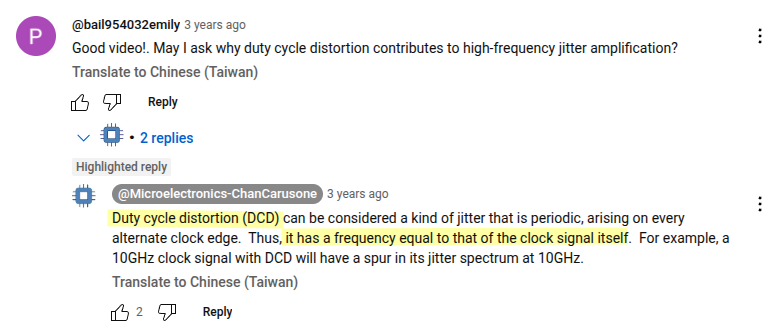Zero(DC component) and Nyquist Component in FFT
DC offset
Performing FFT to a signal with a large DC offset would often result in a big impulse around frequency 0 Hz, thus masking out the signals of interests with relatively small amplitude.
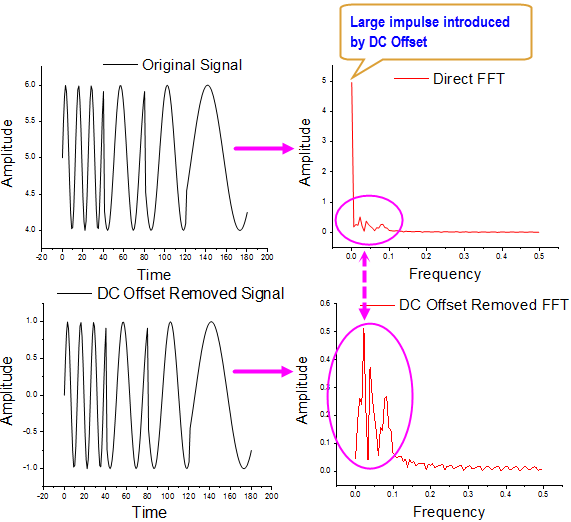
One method to remove DC offset from the original signal before performing FFT
- Subtracting the Mean of Original Signal
You can also not filter the input, but set zero to the zero frequency point for FFT result.
Nyquist component
If we go back to the definition of the DFT \[ X(N/2)=\sum_{n=0}^{N-1}x[n]e^{-j2\pi (N/2)n/2}=\sum_{n=0}^{N-1}x[n]e^{-j\pi n}=\sum_{n=0}^{N-1}x[n](-1)^n \] which is a real number.
The discrete function \[ x[n]=\cos(\pi n) \] is always \((-1)^n\) for integer \(n\)
One general sinusoid at Nyquist and has phase shift \(\theta\), this is \(T=2\) and \(T_s=1\)
\[\begin{align} x[n] &= A \cos(\pi n + \theta) \\ &= A \big( \cos(\pi n) \cos(\theta) - \sin(\pi n) \sin(\theta) \big) \\ &= \big(A\cos(\theta)\big) \cos(\pi n) + \big(-A\sin(\theta)\big) \sin(\pi n) \\ &= \big(A\cos(\theta)\big) (-1)^n + \big(-A\sin(\theta)\big) \cdot 0 \\ &= B \cdot (-1)^n \\ \end{align}\]
Where \(A\cos(\theta)=B\).
Moreover \(B \cdot (-1)^n = B\cdot \cos(\pi n)\), then \[ B\cdot \cos(\pi n) = A \cdot \cos(\pi n + \theta) \] We can NOT distinguish one from another.
In other words, you CAN'T infer the signal from \(X(\frac{N}{2})\) \[\begin{align} X(k)\frac{1}{N}e^{j 2 \pi \frac{nk}{N}}\bigg|_{k=\frac{N}{2}} &= \frac{X\left(\frac{N}{2} \right)}{N}(-1)^n \\ &= \frac{X\left(\frac{N}{2} \right)}{N}\cos(\pi n) \\ &= \frac{X\left(\frac{N}{2} \right)}{N}\left( \cos(\pi n) - \beta \sin(\pi n) \right) \\ &= \frac{X\left(\frac{N}{2} \right)}{N}\sqrt{1+\beta^2}\left(\frac{1}{\sqrt{1+\beta^2}} \cos(\pi n) - \frac{\beta}{\sqrt{1+\beta^2}} \sin(\pi n) \right) \\ &= \frac{X\left(\frac{N}{2} \right)}{N} \frac{1}{\cos(\theta)}\left(\cos(\theta) \cos(\pi n) - \sin(\theta) \sin(\pi n) \right) \\ &= \frac{X\left(\frac{N}{2} \right)}{N} \frac{1}{\cos(\theta)} \cos(\pi n+\theta) \end{align}\]
where \(\beta \in \mathbb{R}\) and you wouldn't know it because \(\sin(\pi n)=0 \quad \forall n \in \mathbb{Z}\)
For example, if \(\theta=0\) \[ X(k)\frac{1}{N}e^{j 2 \pi \frac{nk}{N}}\bigg|_{k=\frac{N}{2}}= \frac{X\left(\frac{N}{2} \right)}{N} \cos(\pi n) \] However, if \(\theta=\frac{\pi}{3}\) \[ X(k)\frac{1}{N}e^{j 2 \pi \frac{nk}{N}}\bigg|_{k=\frac{N}{2}}= \frac{X\left(\frac{N}{2} \right)}{N}\cdot 2 \cos(\pi n+\frac{\pi}{3}) \]
That sort of ambiguity is the reason for the strict inequality of the sampling theorem's condition.
Duty Cycle Distortion
[Prof. Tony Chan Carusone, Low-Jitter CMOS Clock Distribution]
Both edges is used for clock waveform to evaluate the duty cycle distortion,
Assuming TIE is [0 0.2 0 0.2 0 0.2 ...], then subtract
DC offset, we get [-0.1 0.1 -0.1 0.1 ...], shown as
below

The amplitude is manifested in FFT amplitude spectrum, i.e. Nyquist component, which is 0.1 in follow figure
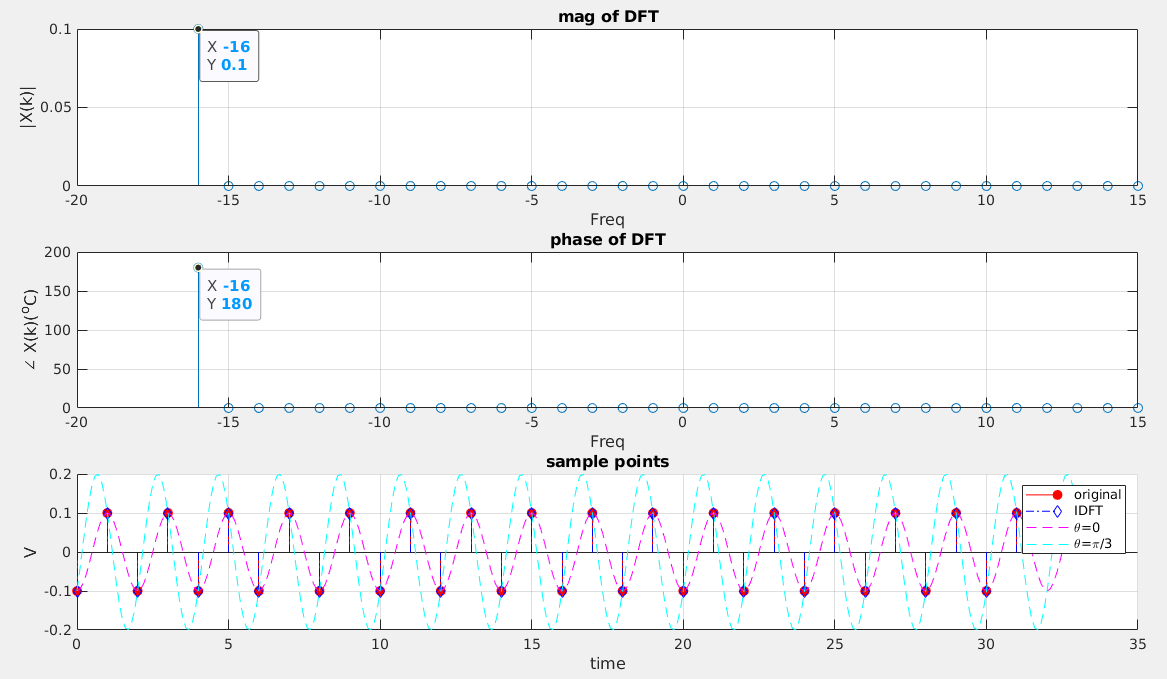
1 | N = 32; |
Single-Sided Amplitude Spectrum
DC and Nyquist frequency of FFT left over
P1(2:end-1) = 2*P1(2:end-1);
1 | Fs = 1000; % Sampling frequency |
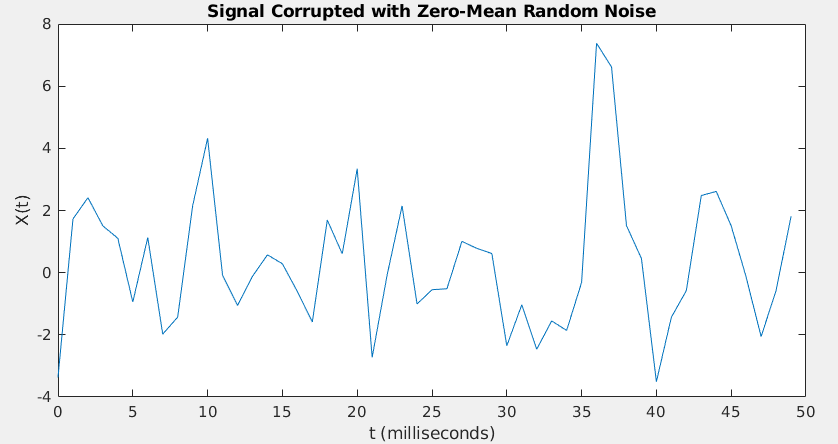
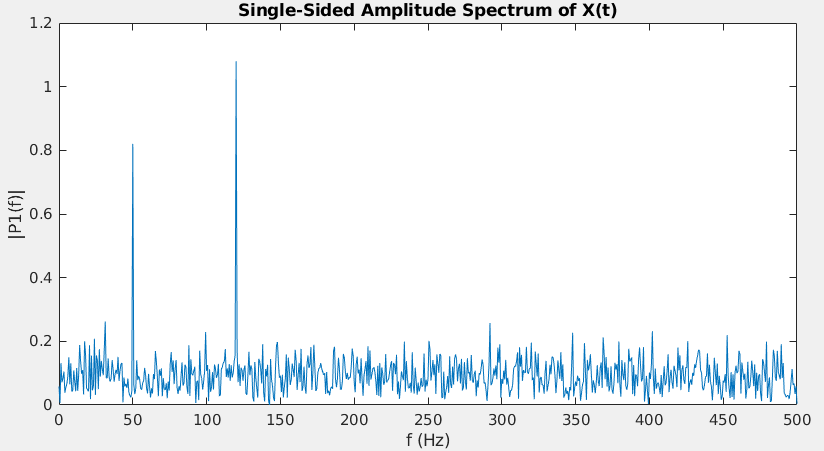
Alternative View
The direct current (DC) bin (\(k=0\)) and the bin at \(k=N/2\), i.e., the bin that corresponds to the Nyquist frequency are purely real and unique.
sinusoidal waveform with \(10Hz\), amplitude 1 is \(cos(2\pi f_c t)\). The plot is shown as below with sampling frequency is \(20Hz\)
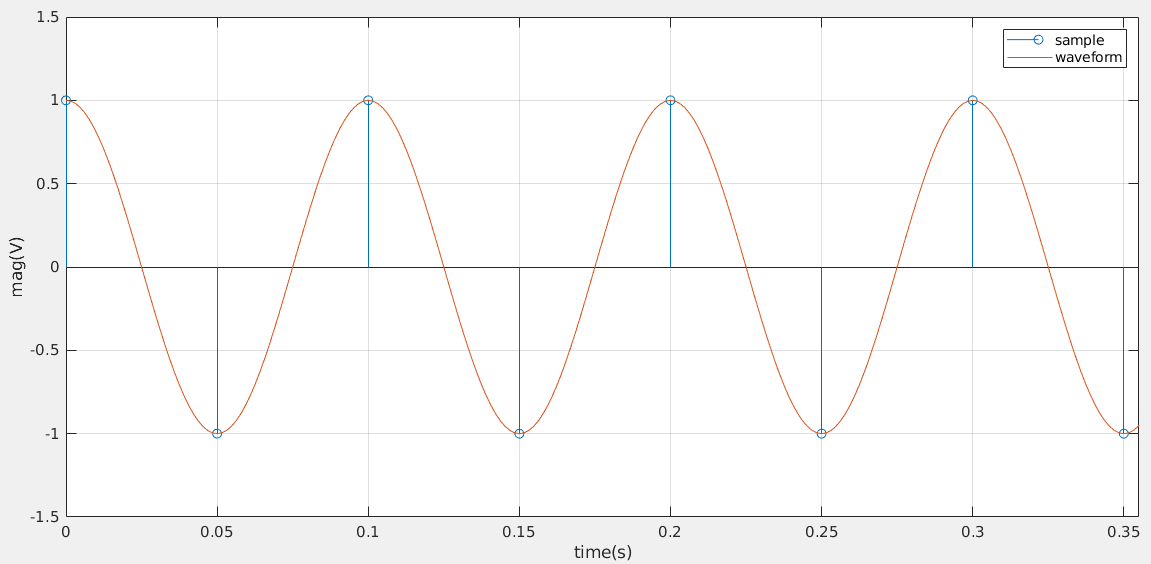
Amplitude and Phase spectrum, sampled with \(f_s=20\) Hz
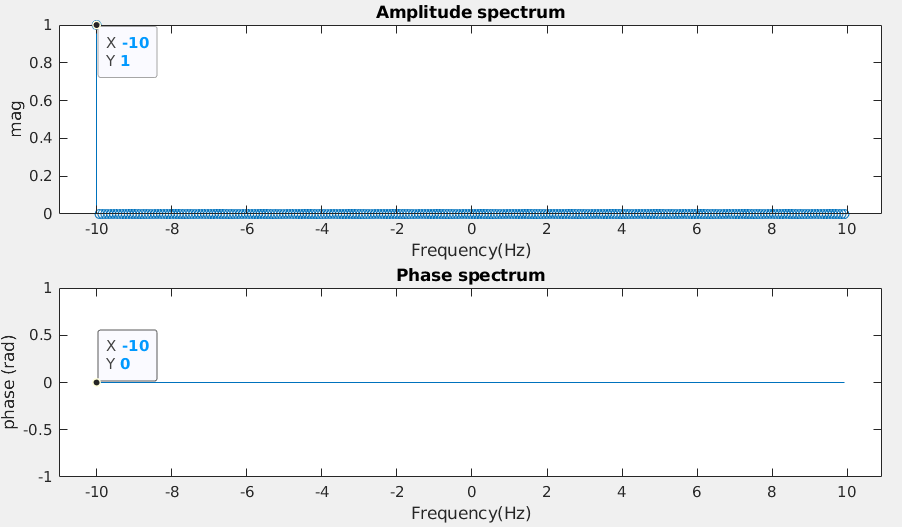
The FFT magnitude of \(10Hz\) is 1 and its phase is 0 as shown as above, which proves the DFT and IDFT.
Caution: the power of FFT is related to samples (DFT Parseval's theorem), which may not be the power of continuous signal. The average power of samples is ([1 -1 1 -1 -1 1 ...]) is 1, that of corresponding continuous signal is \(\frac{1}{2}\).
Power spectrum derived from FFT provide information of samples, i.e. 1
Moreover, average power of sample [1 -1 1 -1 1 ...] is same with DC [1 1 1 1 ...].
code
1 | fc = 10; |
reference
OriginLab, How to Remove DC Offset before Performing FFT URL: http://blog.originlab.com/how-to-remove-dc-offset-before-performing-fft
How to remove DC component in FFT? URL: https://www.mathworks.com/matlabcentral/answers/712808-how-to-remove-dc-component-in-fft#answer_594373
Analyzing a signal that contains frequency content at Fs/2 doesn't seem to work unless there is a phase shift URL: https://dsp.stackexchange.com/a/59807/59253
Nyquist–Shannon sampling theorem, Critical frequency URL: https://en.wikipedia.org/wiki/Nyquist%E2%80%93Shannon_sampling_theorem#Critical_frequency
Why remove energy at Nyquist before ifft? URL: https://dsp.stackexchange.com/a/22851/59253
